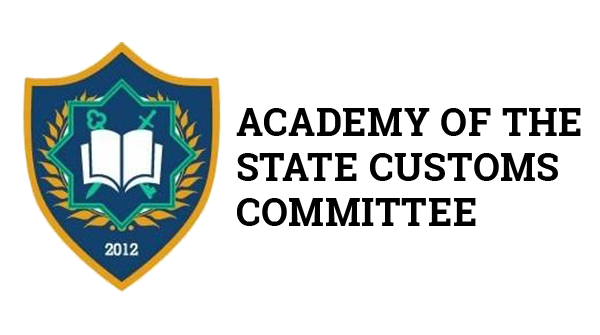Recent Additions
- Some of the metrics are blocked by yourconsent settings
Publication Blended teaching of university mathematics courses based on Online Merge Offline model(Elsevier BV, 2025-12)In order to study the impact of Online Merge Offline (OMO) hybrid teaching model on college mathematics courses, the article constructs a new hybrid teaching model based on the OMO model and evaluates it using a modified oriented evaluation model based on an improved multi-party weighting index algorithm (Context Evaluation-Input Evaluation-Process Evaluation-Product Evaluation, CIPP), to evaluate it. The results show that the entropy method is better in the improved CIPP evaluation model, and the correct rate of the entropy method is 93.25 %. The improved correlation algorithm takes less time and is faster, with the average time of the improved correlation algorithm being 100ms and the lowest time of the original correlation algorithm being 300ms. The hybrid teaching mode is more excellent than the traditional teaching mode, and the rate of student achievement in the hybrid teaching mode is 49.9 higher than the rate of student achievement in the traditional teaching mode. - Some of the metrics are blocked by yourconsent settings
Publication Mathematical modeling for heat transportation analysis in hybrid nanofluid through a wedge surface under the influence of magnetic field(Elsevier BV, 2025-12)This study presents a mathematical model to analyze heat transport in a hybrid nanofluid composed of aluminum oxide (Al2O3) and beryllium copper nanoparticles dispersed in water, flowing over a wedge-shaped surface under the influence of a transverse magnetic field. The formulation incorporates essential physical effects, including radiative heat transfer, activation energy, and chemical reaction kinetics, along with a nonlinear heat source. Using similarity transformations, the governing partial differential equations are reduced to a system of nonlinear ordinary differential equations, which are solved numerically via the fourth-order Runge–Kutta method combined with a shooting technique in MATLAB. The results reveal how magnetic intensity, nanoparticle concentration, and other dimensionless parameters affect the velocity, temperature, and concentration distributions. Significantly, the hybrid nanofluid demonstrates a 23% enhancement in thermal capacity, underscoring its potential to improve heat transfer performance. The computed skin friction, Nusselt number, and Sherwood number further validate the model and highlight its applicability to magnetically controlled thermal systems. - Some of the metrics are blocked by yourconsent settings
Publication A nonlinear mathematical analysis of nanoparticle's velocity, temperature and concentration in magnetohydrodynamic convective flow(Elsevier BV, 2025-06)The mathematical model of chemical processes and heat radiation impacts on the MHD flow of nanofluid is discussed. This model employs nonlinear differential equations, including a nonlinear component associated with combined convection and chemical processes. The changes in temperature, concentration, and velocity caused by thermal factors are examined in this article. In the magnetohydrodynamic flow of copper-water nanofluid, we compute the Nusselt and Sherwood numbers and the skin friction. Our calculations take into consideration both viscosity and ohmic dissipation. This theoretical analysis is conducted for the first time in MHD flow problems using the analytical method (J. Phys. Chem. C 2023, 127, 24, 11,517–11,525) (Rajendran-Joy method) and numerical calculations (Scilab). This analytical result is compared with the numerical result to determine their efficiency and accuracy. Also, the Local Nusselt and Sherwood numbers and skin friction coefficient for various parameters are discussed and compared with the numerical result. The graphs and tables show how different factors affect temperature, concentration, and velocity. A sensitivity analysis of parameters on velocity is also discussed. - Some of the metrics are blocked by yourconsent settings
Publication Mathematical modeling of heat and mass transfer in metal hydride hydrogen storage systems: A comprehensive review(Elsevier BV, 2026-01)Metal hydrides (MHs) are among the most promising materials for safe, compact, and reversible hydrogen storage, but their deployment is constrained by slow kinetics and thermal management challenges. Since MH performance is strongly governed by coupled heat and mass transfer processes, mathematical modeling has become essential for optimizing and designing storage systems. This review addresses a critical gap since the last comprehensive review in 2016 by synthesizing state-of-the-art mathematical modeling approaches for heat, mass, and momentum transfer in MH reactors. Starting from effective medium theory, we formulate macroscopic conservation equations and critically compare local thermal equilibrium (LTE) and non-equilibrium (LTNE) models. LTE models are computationally efficient but may underpredict wall heat fluxes, while LTNE models enhance accuracy at higher computational cost. We analyze empirical equilibrium pressure relations, reaction kinetics, reactor geometries, boundary conditions, and thermal management strategies, including phase change materials (PCMs) and heat transfer fluids (HTF). While metal foam integration can enhance charging rates by up to 65 %, phase change materials (PCMs) can reduce hydrogen absorption time by 60.2 % in metal hydride reactors. By consolidating theoretical and numerical perspectives, and comparing the trade-offs between various modeling approaches, this review identifies limitations and outlines future research directions to accelerate the design and deployment of efficient solid-state hydrogen storage technologies. - Some of the metrics are blocked by yourconsent settings
Publication Design and validation of mathematical model for evaluation of PEM fuel cell vehicle performance under different driving test cycles(Elsevier BV, 2025-12)A comprehensive mathematical model was developed to simulate the performance of a Proton Exchange Membrane Fuel Cell (PEMC) hybrid vehicle under various driving test cycles. The main components of the vehicle system included a PEMFC stack, a hydrogen supply system, an air supply system, a cooling system, a drive motor, and a lithium-ion battery pack. The vehicle data parameters were based on the specifications of the 2014 Toyota Mirai 1st-Gen. PEMFC vehicle. Five test cycles (FTP-75, WLTC Class 3, HWFET, US06, and Maximum Speed) were used for verification. The simulation results for the fuel cell stack, battery, drive motor, and vehicle speed performance were compared with the measured data reported in the literature. The maximum relative errors were found to be 1.6 % for the fuel cell stack. Overall, the model presented in this study provides a strong foundation for the ongoing design and optimization of fuel cell hybrid vehicle systems.
Most viewed
- Some of the metrics are blocked by yourconsent settings
Publication - Some of the metrics are blocked by yourconsent settings
Publication - Some of the metrics are blocked by yourconsent settings
Publication Some properties of the pT regions observed at the LHC energies(2025-04-29)The inclusive spectrum of the charged particles, [Formula: see text]0- and [Formula: see text]-mesons produced in the pp collisions at LHC energies were analyzed by fitting them with exponential functions. It was found the spectra were composed of several p[Formula: see text] regions, which could be characterized by the length of the regions [Formula: see text] and two free fitting parameters [Formula: see text] and [Formula: see text]. The study of the [Formula: see text] dependences of the parameters [Formula: see text] and [Formula: see text] and of the energy dependencies of the [Formula: see text], [Formula: see text] and [Formula: see text] showed that the regions can be classified into two groups depending on the values of the [Formula: see text], [Formula: see text] and [Formula: see text]. The values of the [Formula: see text] and [Formula: see text] for the first group don’t depend on colliding energy and the type of the particles (though the values of [Formula: see text] increase linearly with energy) whereas the characteristics in the second group of regions show strong dependencies. It was found that the ratio of the length for the [Formula: see text]-mesons to one for the [Formula: see text]0-mesons is approximately equal to the ratio of their mass: [Formula: see text]. Assuming that the values of the [Formula: see text] are directly proportional to the string tension the result could be considered as evidence in favor of parton string fragmentation dynamics. The increase in the lengths for the [Formula: see text]-mesons’ regions is accompanied by an increase of the values for the parameter [Formula: see text]. It can mean that the [Formula: see text]-mesons were produced at smaller values of [Formula: see text] compared with that for [Formula: see text]0-mesons. The results show that for the first group of regions the lengths of the regions are [Formula: see text]3–5 times greater than the lengths of neighboring, lower p[Formula: see text] regions. For the second group of regions the lengths of the regions are [Formula: see text]1–2 times greater than the lengths of neighboring lower p[Formula: see text] region. In the framework of the string fragmentation and hadronization dynamics, this could mean that the particles in the group [Formula: see text] of regions are produced through previous-generation strings decays into [Formula: see text]3–5 strings while those in group [Formula: see text] originate from previous-generation strings decays into [Formula: see text]2 strings.









